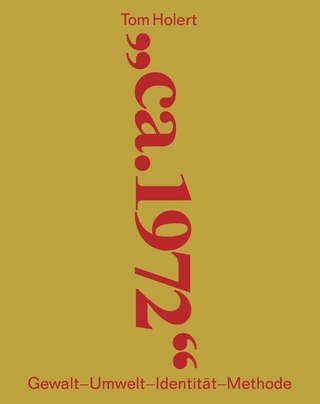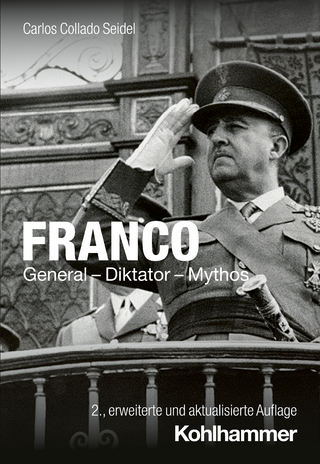
Berlin and the Cold War
Ohio University Press (Verlag)
978-0-8214-2534-3 (ISBN)
The Cold War is back in the news. So is history, in the sense of past geopolitical confrontations that for a span of a few decades were thought to be largely decoupled from present-day political developments. Of course, such reflexive reactions lack nuance and, until the Russian invasion of Ukraine in February 2022, tended to refer more to tensions between the United States and China. We should neither see Russia’s aggressive war in Ukraine immediately as part of a new cold war—though it could certainly become one of its foundation pieces—nor define history simply in terms of warfare and conflict. Yet such history has great appeal in efforts to understand the dizzying and depressing events of recent years. For example, correspondents and commentators have likened the delivery of weapons systems, protective gear, and humanitarian aid to a beleaguered Ukraine to the Berlin Airlift of 1948–49. But relying on history as a guide may mislead as much as enlighten.
No city symbolizes the Cold War quite as Berlin does. When we think of the Cold War and of Berlin, we tend to emphasize the crises—the 1948–49 blockade and airlift, perhaps the 1953 East German workers’ uprising, surely the 1958–61 crisis, during which the Berlin Wall was built—and the climactic ending of the Cold War in Europe when the wall came down. Berlin may conjure up iconic moments and tropes, from a statement attributed to Nikita Khrushchev in 1963 that Berlin was “the testicles of the West,” to John F. Kennedy’s insistence that all free men had to be invested in the defense of Berlin, to Ronald Reagan’s exhortation to Mikhail Gorbachev to “tear down this wall.” For American presidents (or presidential hopefuls), Berlin and the Brandenburg Gate have remained powerful images, even in the twenty-first century. A presence in Berlin signals strong leadership in the West, even though the proximate reasons why the West, as a political construct, emerged in the first place may be gone. In that sense, Berlin also stands for overcoming the past: first, West Berlin as the counterpoint not only to eastern communism but also to defeated fascism, and second, the new Berlin as the capital of a unified Germany and as a symbol that the West has won.
Seth Givens is a historian at the United States Marine Corps History Division in Quantico, Virginia. He has published on U.S. policy, strategy, and military operations in the Cold War. Ingo Trauschweizer is a professor of history and former director of the Contemporary History Institute at Ohio University, where he teaches courses on American and global military history, the Cold War, and the Vietnam War. His books include The Cold War U.S. Army: Building Deterrence for Limited War and Maxwell Taylor’s Cold War: From Berlin to Vietnam.
List of illustrations
Foreword
WALTER MOMPER
Introduction
INGO TRAUSCHWEIZER
Part I. Postwar to Cold War, 1945–1957
Gone but Not Forgotten: The Status of Berlin and the Founding of the West German State, 1944–1952
SAMUEL MINER
The First Crisis: US Army Planning and the Defense of Berlin, 1945–1950
SETH GIVENS
The United States, Berlin, and the 1953 Uprising
CHRISTIAN F. OSTERMANN
Abduction City: Abductions by the GDR State Security Service in Cold War Berlin
SUSANNE MUHLE
Part II. Crisis, 1958–1971
The Never-Ending Berlin Crisis and the Limits of Alliance Politics
ERIN MAHAN
The Berlin Wall in History and Memory
HOPE M. HARRISON
Between Freedom’s Symbol and Casus Belli: Berlin in the Johnson and Nixon Years
THOMAS SCHWARTZ
Part III. Beyond the Cold War in Berlin, 1972–1990s
Trade and Energy Diplomacy as Catalysts for Détente: Berlin and the Schmidt and Kohl Governments
STEPHAN KIENINGER
Berlin 1989 and the New Atlanticism: US and West German Visions for the Post–Cold War Architecture of Europe
PETER RIDDER
Performing the Wall after Its Fall
MATT CORNISH
Contributors
Index
| Erscheinungsdatum | 05.07.2024 |
|---|---|
| Reihe/Serie | Baker Series in Peace and Conflict Studies |
| Co-Autor | Walter Momper |
| Zusatzinfo | Illustrationen |
| Verlagsort | Athens |
| Sprache | englisch |
| Maße | 152 x 229 mm |
| Einbandart | kartoniert |
| Themenwelt | Geschichte ► Allgemeine Geschichte ► Zeitgeschichte |
| Geisteswissenschaften ► Geschichte ► Regional- / Ländergeschichte | |
| Sozialwissenschaften ► Politik / Verwaltung ► Europäische / Internationale Politik | |
| ISBN-10 | 0-8214-2534-X / 082142534X |
| ISBN-13 | 978-0-8214-2534-3 / 9780821425343 |
| Zustand | Neuware |
| Informationen gemäß Produktsicherheitsverordnung (GPSR) | |
| Haben Sie eine Frage zum Produkt? |
aus dem Bereich


